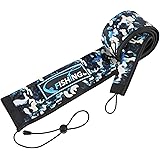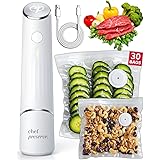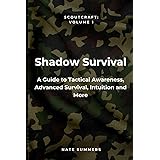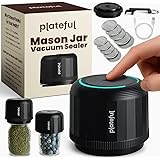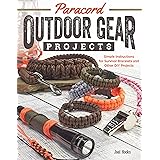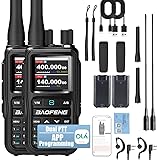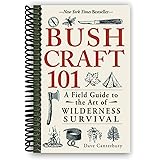Navigating an unexpected emergency, especially in a remote environment, can be daunting. The video above, produced by the Federal Aviation Administration’s Civil Aerospace Medical Institute, highlights critical skills for general aviation, yet its lessons in survival medicine are universally applicable. It demonstrates how essential it is to move beyond conventional first aid and adopt strategies for prolonged medical care when professional help is days, or even weeks, away.
The core challenge in a survival scenario is maintaining your health to increase your chances of rescue. Injuries and illnesses can drastically reduce your ability to signal for help, build shelter, or forage for resources. Understanding basic medical care in survival situations isn’t just about patching up wounds; it’s about making smart decisions that safeguard your life and limb when professional medical attention is not an immediate option.
Mastering Initial Medical Care in Survival Situations
When an injury strikes in the wilderness, your immediate reaction can significantly impact the outcome. The principles of survival medicine prioritize stability and prevention, focusing on practical steps to manage ailments until rescue arrives.
1. Effective Bleeding Control: Beyond the Movies
One of the most critical immediate threats is severe bleeding. Misinformation, often from popular media, can lead to dangerous choices. The fundamental steps for controlling blood loss are straightforward and effective.
First, apply direct pressure to the wound using a clean pad or cloth. Press firmly and hold without peeking, as this allows clots to form. If direct pressure isn’t enough, or if the wound is inaccessible, identify a major artery between the wound and the heart. Common pressure points include the brachial artery (inner arm, midway between shoulder and elbow) for arm injuries, or the femoral artery (groin area) for leg injuries. Applying firm pressure to these points can significantly restrict blood flow.
A common misconception is the immediate use of a tourniquet. While they can save lives, tourniquets are a measure of last resort. The video wisely advises against their premature use, explaining that while they stop bleeding, they also cut off blood flow to the entire limb, risking severe tissue damage and potential limb loss if left on too long. A study by the U.S. Army Institute of Surgical Research found that complications, including nerve damage and amputation, increased significantly with prolonged tourniquet application. Use a tourniquet only if direct pressure and arterial pressure points fail to control life-threatening hemorrhage.
2. Preventing and Treating Blisters: Your Feet Are Your Lifeline
In a survival scenario, your feet are invaluable for mobility and escape. Even minor foot issues like blisters can escalate quickly, incapacitating you. Prevention is key: wear properly fitting shoes and clean, dry socks. If you feel rubbing, stop immediately and address the issue.
If a blister forms, resist the urge to pop it. Your body creates blisters to form a sterile, protective barrier over the injured skin. Draining the fluid breaks this barrier, inviting infection. Instead, clean the area and cover the blister with a clean, protective bandage, such as moleskin or medical tape. Ensure your feet stay dry by airing them out frequently, even if it means pausing your activity. This simple act of prevention and proper care can mean the difference between remaining mobile and being stranded.
3. Managing Bites and Stings: Knowing the Real Dangers
Encounters with insects and reptiles are common in the outdoors. Understanding how to react to bites and stings is crucial for survival medicine.
Insect Stings: If stung by a bee, wasp, or yellow jacket, scrape the stinger away horizontally with a fingernail or credit card, rather than pulling it. Pulling can squeeze the venom sac, injecting more venom. While most stings are just painful, the transcript highlights a critical fact: “Stinging insects actually end up killing more people than snakes do every year” in the United States, primarily due to allergic reactions. If someone experiences signs of anaphylaxis (difficulty breathing, swelling of the face/throat, dizziness), emergency action is required, ideally with an epinephrine auto-injector if available.
Snake and Lizard Bites: If bitten by a venomous snake, the immediate priority is to stay calm. Panic increases blood circulation, which can spread venom more quickly. Drink plenty of water to stay hydrated, but understand this is not an antidote to the venom. The video correctly debunks the Hollywood myth of cutting and sucking out venom, as this is ineffective and introduces new risks of infection. Similarly, tourniquets are not recommended for snake bites, as they can cause localized tissue damage without stopping venom circulation. The only venomous lizards in North America are the Gila monster and Mexican beaded lizard; both are generally sluggish. If bitten by any venomous reptile, immobilize the affected limb, keep it below heart level if possible, and seek medical attention as soon as possible.
Spider and Scorpion Bites: While most spider and scorpion bites are harmless, two spiders in North America pose a significant threat: the black widow and the brown recluse. Black widow venom is neurotoxic, causing muscle cramps, pain, and sometimes systemic symptoms. Brown recluse venom is cytotoxic, leading to tissue damage and potentially a necrotic ulcer. Prevention is key: shake out clothing, shoes, and sleeping bags before use. If bitten, clean the area and monitor for symptoms. Most fatalities from these bites are rare, but severe reactions require medical attention.
4. Combating Diarrhea and Dehydration: The Silent Threat
Diarrhea is a surprisingly common and dangerous ailment in survival situations, caused by tension, unfamiliar foods, or infection. The main threat it poses is severe dehydration. As the video explains, “Diarrhea can be harmful to you out here, because it can make you really dehydrated.”
The primary treatment for diarrhea in the wilderness is aggressive rehydration. Drink copious amounts of clean water to replace lost fluids and electrolytes. If available, activated charcoal (from a campfire, as mentioned in the video) can help bind toxins and alleviate symptoms. A study published in the journal Critical Care Medicine noted activated charcoal’s effectiveness in adsorbing various toxins, making it a viable improvised treatment. Keeping yourself and your camp clean is also vital to prevent further infection and control the spread of pathogens.
5. Treating Burns: Managing Heat and Infection
Burns are serious injuries in any setting, and in a survival context, they present a high risk of dehydration and infection. The moment a burn occurs, act swiftly to cool the injury. Immediately immerse the burned area in cold water or apply cool, wet compresses for at least 10-20 minutes. This stops the burning process and prevents further tissue damage from residual heat.
As the skin is the body’s primary barrier against infection, a burn compromises this defense. After cooling, gently clean the burn with mild soap and water, being careful not to disrupt damaged tissue. The priority is to keep the area as clean and protected as possible to stave off infection, which the video emphasizes is “almost uncontrollable in survival situations.” Use the most sterile dressing available; if no medical kit is present, even boiled cloth can serve as a makeshift sterile bandage. Burns, especially second- and third-degree, can lead to significant fluid loss, making increased water intake critical to prevent dehydration and subsequent shock.
6. Maintaining Hygiene and Preventing Illness: A Holistic Approach to Survival Medicine
The video underscores a critical, often overlooked aspect of survival medicine: basic hygiene and camp organization. “Your chances of getting hurt are decreased when you keep everything in its place and you use your survival tools properly.” Maintaining cleanliness, even in rugged conditions, drastically reduces the risk of illness and infection, which can quickly become incapacitating.
This includes keeping yourself and your clothes clean, properly disposing of waste, and organizing your gear. Even a slight fever, as experienced by the injured man, can be a symptom of a more serious underlying issue like infection or dehydration. Treating symptoms like fever with aspirin (if available) and ensuring adequate hydration are practical measures to support overall health.
The Mindset of Survival Medicine: Calm, Smart, Resilient
Ultimately, survival medicine is as much about mindset as it is about physical treatment. The calm and knowledgeable approach demonstrated by the woman in the video highlights the importance of composure under pressure. Panic can lead to poor decisions, increase physical strain, and spread fear. Staying calm, thinking logically, and being prepared with fundamental knowledge significantly enhance your chances of enduring a crisis.
This isn’t just “first aid”—it’s a comprehensive approach to self-care and mutual aid when external support is unavailable. By understanding these principles of medical care in survival situations, you empower yourself to face unexpected challenges with resilience and a greater likelihood of returning home safely. You become your own doctor, focusing on practical steps to manage injuries and illnesses while tirelessly working towards rescue.


